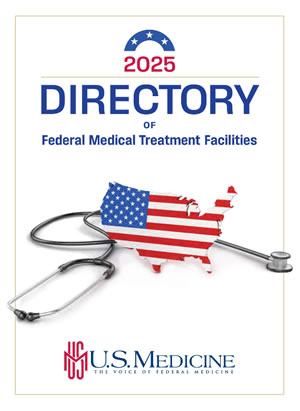CHICAGO—With the widespread adoption of molecular targeted therapies for advanced renal cell carcinoma (RCC), patients are living longer and with fewer adverse effects than they did with cytokine therapies which constituted the previous preferred first-line treatment. The longer overall survival has increased attention to the health-related quality of life (HRQoL) of these patients as an important factor in joint decision-making and therapy selection, particularly in older patients with co-morbidities such as those served by the VA.
A presentation at the 2023 American Society of Clinical Oncology (ASCO) annual meeting in Chicago directly addressed this issue with a new analysis of data from the CheckMate 9ER trial.
The CheckMate 9ER trial compared nivolumab plus cabozantinib to sunitinib in patients with advanced renal cell cancer (aRCC). It found that nivolumab plus cabozantinib resulted in a 30% increase in overall survival, 37.7 months (95% CI 35·5–not estimable) compared to 34·3 months (29·0–not estimable) in the sunitinib group (hazard ratio [HR] 0·70 [95% CI 0·55–0·90], p=0·0043). The combination also nearly doubled the progression-free survival, at 16·6 months (12·8–19·8) vs. 8·3 months (7·0–9·7; HR 0·56 [95% CI 0·46−0·68], p<0·0001).1
The ASCO analysis compared the quality of life in the two treatment arms in CheckMate 9ER using risk-based subgroup criteria established by the international Metastatic Renal Cell Carcinoma Database Consortium (IMDC). Study participants were categorized as having a favorable (F) risk, if they had an IMDC score of 0, or as intermediate/poor (I/P) risk for scores of 1-6 at randomization. The researchers evaluated HRQoL using the Functional Assessment of Cancer Therapy-Kidney Symptom Index (FKSI-19). Responses to FKSI-19 item GP5, bother due to treatment side effects, were aggregated into two groupings, minimal for “not at all” and “a little bit” responses and notable for “somewhat,” “quite a bit,” or “very much” responses.
The researchers found that intermediate/poor-risk participants in the nivolumab plus cabozantinib group reported improved health-related quality of life through week 151, while those in the sunitinib arm experienced a decrease in HRQoL over the 151 weeks. There was no difference in HRQoL in favorable-risk patients.
Patients in both risk groups were less likely to find side effects of nivolumab plus cabozantinib bothersome compared to sunitinib (I/P-risk odds ratio [OR], 0.50; 95% CI, 0.34–0.75; F-risk OR, 0.51; 95% CI, 0.28–0.91). Further, in the I/P risk group, analysis of the FKSI-19 scores suggested lower deterioration risk for participants in the nivolumab plus cabozantinib arm than in the sunitinib arm.
Patients were less likely to be bothered by side effects of NIVO+CABO vs SUN regardless of risk (I/P-risk odds ratio [OR], 0.50; 95% CI, 0.34–0.75; F-risk OR, 0.51; 95% CI, 0.28–0.91). TTCD analysis of FKSI-19 scores of the I/P-risk subgroup indicated that the NIVO+CABO arm had lower deterioration risk than the SUN arm. For the F-risk subgroup, risk based on FKSI-19 total scores was similar for both treatment arms.
- Motzer RJ, Powles T, Burotto M, Escudier B, Bourlon MT, Shah AY, Suárez C, Hamzaj A, Porta C, Hocking CM, Kessler ER, Gurney H, Tomita Y, Bedke J, Zhang J, Simsek B, Scheffold C, Apolo AB, Choueiri TK. Nivolumab plus cabozantinib versus sunitinib in first-line treatment for advanced renal cell carcinoma (CheckMate 9ER): long-term follow-up results from an open-label, randomized, phase 3 trial. Lancet Oncol. 2022 Jul;23(7):888-898. doi: 10.1016/S1470-2045(22)00290-X. Epub 2022 Jun 7. Erratum in: Lancet Oncol. 2022 Jul;23(7):e319. Erratum in: Lancet Oncol. 2022 Sep;23(9):e404. PMID: 35688173.
- Cella D, Choueiri TK, blum SI, Ejzkowica F, Wallace J, Zhang J, Simsek B, Ivanescu C, Motzer RJ. Health-related quality of life (HRQoL) of risk-based patient subgroups with advanced renal cell cancer (aRCC) treated with nivolumab plus cabozantinib (NIVO+CABO) vs sunitinib (SUN) in the CheckMate 9ER trial. 2023 ASCO Annual Meeting. June 2-6, 2023. J Clin Oncol 41, 2023 (suppl 16; abstr 4527).


